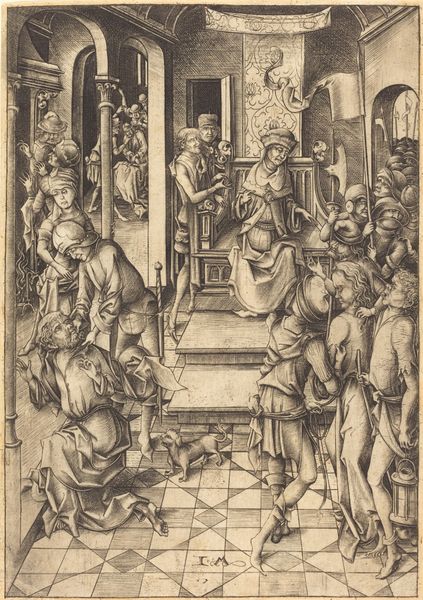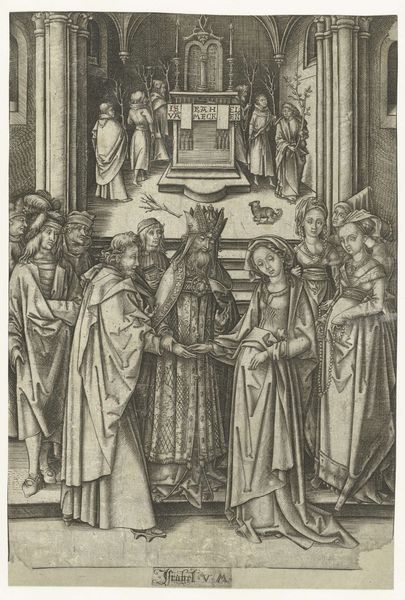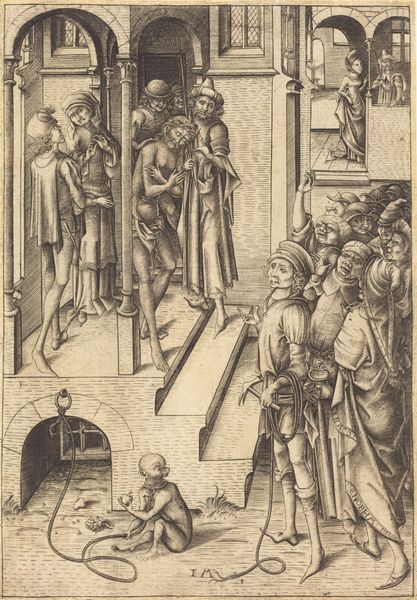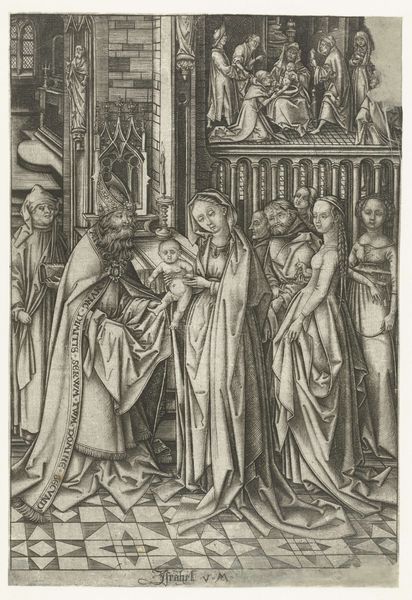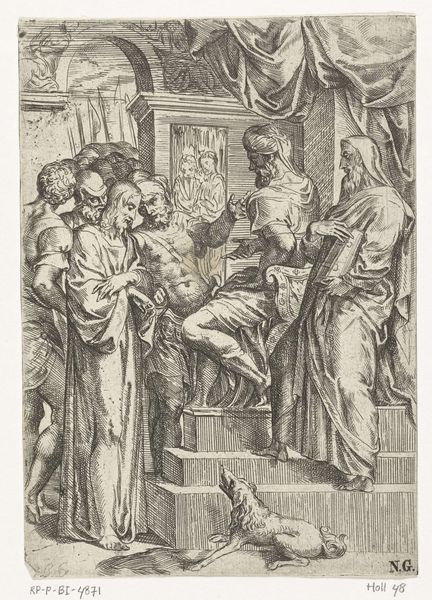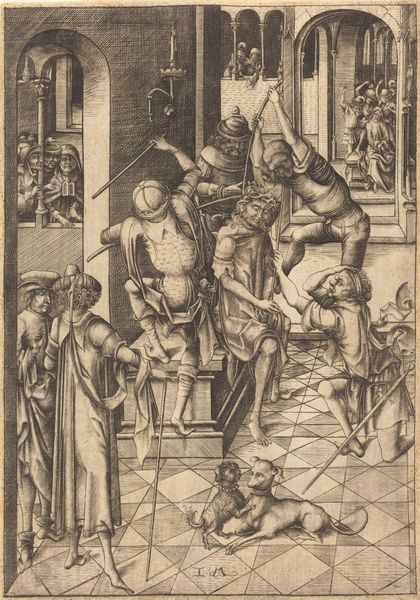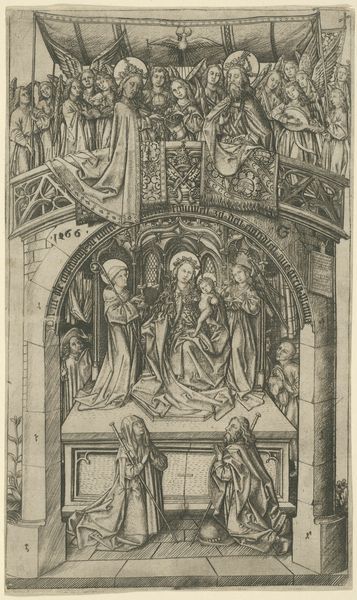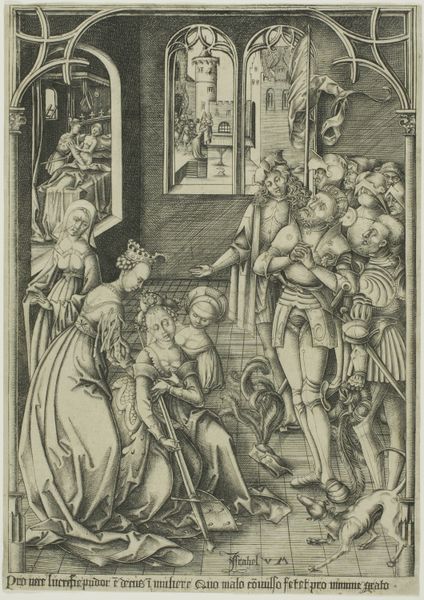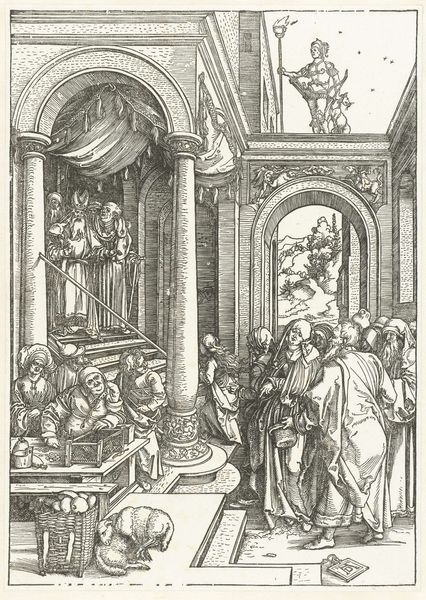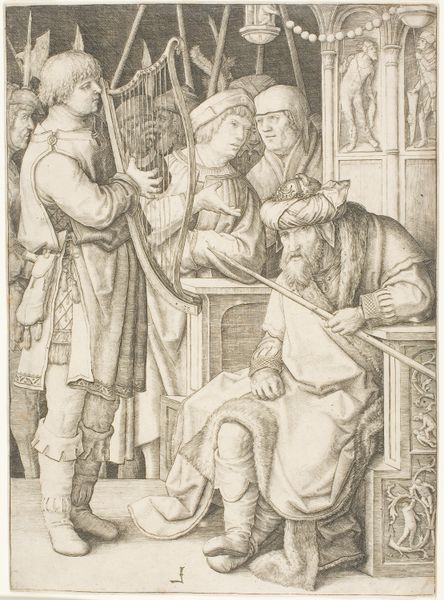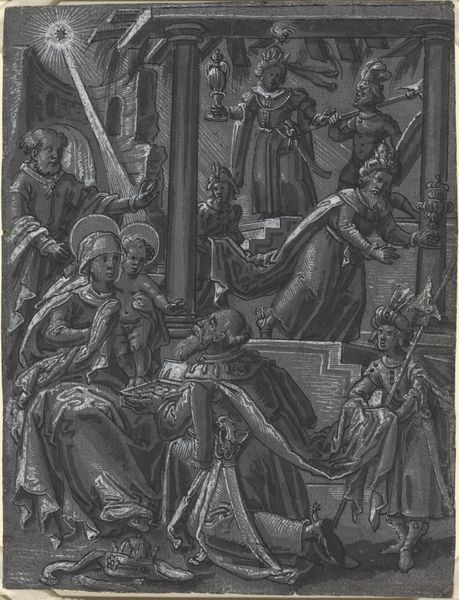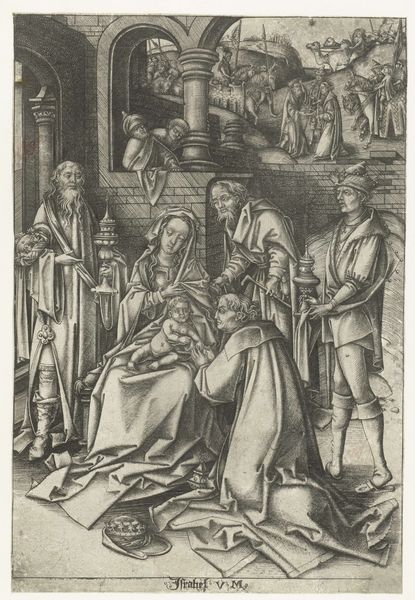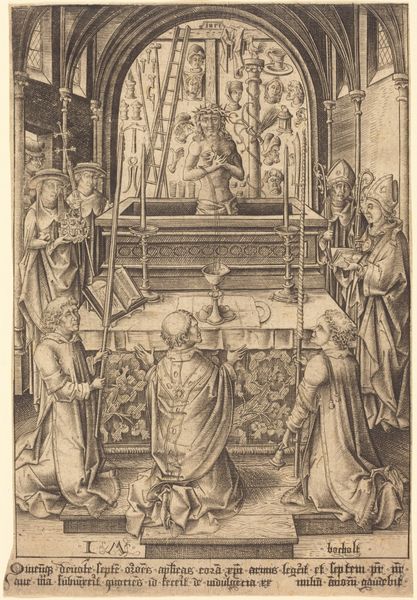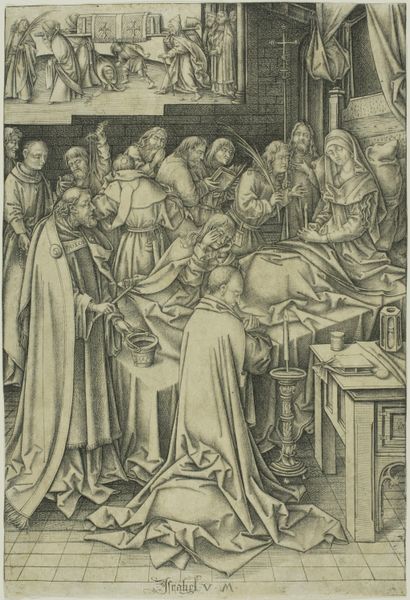
print, engraving
#
narrative-art
#
pen drawing
# print
#
pen illustration
#
pen sketch
#
figuration
#
line
#
history-painting
#
northern-renaissance
#
engraving
Dimensions: height 270 mm, width 184 mm
Copyright: Rijks Museum: Open Domain
Editor: This is "The Presentation of Mary in the Temple," made sometime between 1455 and 1503 by Israhel van Meckenem. It's a print, an engraving, held in the Rijksmuseum. It's incredibly detailed. I'm struck by the sheer amount of activity depicted and all the intricate line work. What do you see in this piece? Curator: The fine lines that constitute this image offer more than mere visual representation. Consider the labor involved. The artisan, Meckenem, meticulously etched each line into a metal plate. This wasn’t simply about illustrating a biblical scene, but about participating in the burgeoning printmaking industry. Editor: So, you're focusing on the *making* of the image itself, as much as the religious aspect? Curator: Precisely. Think about the audience for this print. It was reproducible, meant for wider distribution than a unique painting. The choice of engraving indicates a certain investment in replicability and wider availability, aligning with emerging commercial markets of the time. How does the precision of line work speak to ideas about artistic labor and skill in Northern Renaissance workshops? Editor: So, the image itself becomes a commodity in a way? Like other reproducible crafts? Curator: Exactly. This challenges the romantic idea of the artist as solely divinely inspired. Here, we see artistic practice intertwined with the practical concerns of production and distribution, even shaping social and economic contexts of that time. What does it tell us that religious narratives became part of such production? Editor: It suggests that art isn’t just about individual genius but reflects a whole system of production and consumption! Curator: Indeed! It’s fascinating to think about this artwork as an object embedded in its historical economy. What started as what appeared to be an historical painting suddenly opened a broader insight of the socio-economical environment in which it was produced and consumed!
Comments
No comments
Be the first to comment and join the conversation on the ultimate creative platform.
